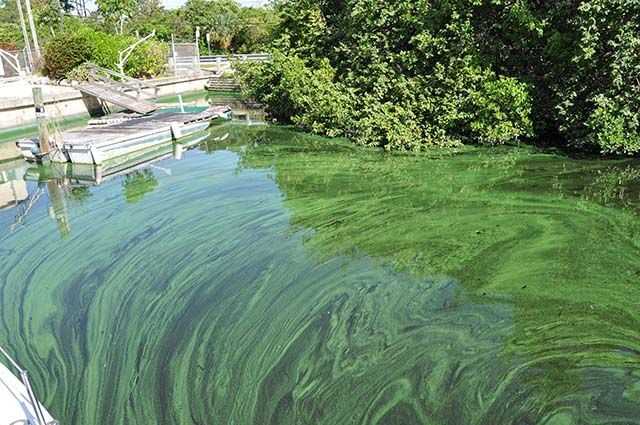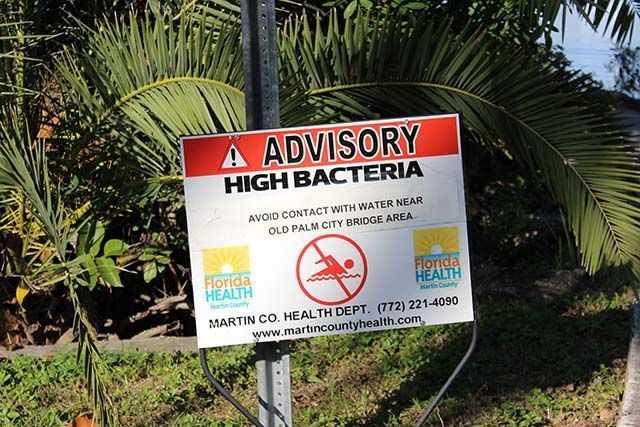
By: Mark D. Perry, Executive Director, Florida Oceanographic Society
[dropcap]O[/dropcap]ur ocean and coastal ecosystems are of the utmost importance. The ocean provides 95% of the living space here on Earth and holds 98% of the water on our planet. It is our life support system. It feeds billions of people around the world, it drives our climate, it absorbs carbon dioxide and it produces 80% of the oxygen we breathe. Every breath we take and every drop we drink depends on a healthy ocean. Every life on the Earth depends on the ocean and now, the ocean’s life depends on every one of us.
More than 80% of people live within 60 miles of the coast and 85% of all the pollution in the ocean comes from land-base activities. We are causing global changes to our atmosphere and the ocean. Since 1970 ocean temperatures have increased by 1 degree causing bleaching of coral reefs. The ocean absorbs roughly 80% of the climate heating, increasing the volume by thermal expansion, causing a rise in sea level. From 1963 to 2003, sea level rose 3 inches with projections of 5-20 inches by 2050 and 23-60 inches by 2100.

Human-generated CO2 emissions are currently 66 million tons per day and our oceans only absorb 22 million tons daily. Carbon dioxide is saturating the ocean waters forming carbonic acid, a process called ocean acidification. The historical pH of the ocean was 8.16 and is now 8.05, that’s a 25% increase in acidity. This dissolves the shells of plankton, corals, oysters, clams, shrimp, crabs and lobster.
We must take action for the future of Florida’s ocean and coastal environments. Here are 8 things we MUST DO NOW:
- Florida must stop all discharges of polluting freshwater from Lake Okeechobee to the St. Lucie River Estuary, Indian River Lagoon and Caloosahatchee River Estuary. These discharges cause lesions on fish, kill oyster reefs and seagrass habitat, cause diseases on sea turtles and bottlenose dolphin and bring harmful toxic algal blooms to the estuaries causing the Health Department to post warnings for “No Human Contact” to our coastal waters!
- Florida and the U.S. must restore America’s Everglades to natural flows from Kissimmee to Florida Bay. Currently 1.7 BILLION GALLONS PER DAY of freshwater that used to flow south to the Everglades now goes to the Atlantic Ocean and Gulf of Mexico, polluting our coastal estuaries and ocean reef ecosystems while wasting this valuable freshwater resource and starving the Everglades ecosystem.
- Florida and the U.S. must establish and implement strong numeric nutrient water quality standards and criteria essential to preventing pollution and protecting the health of Florida’s waters. An enforceable nitrogen and phosphorus standard should be included to protect downstream coastal estuaries and Florida’s ocean ecosystems and must be enforced at the source of the pollution.
- Florida must require all wastewater or RO residual water currently injected underground in Class I injection wells (UIC) to be treated to advanced nutrient-stripping levels. The State should require water re-use instead of allowing more Class I injection of water or “water disposal”. The injection water near the coast is coming up in 60-90 feet depth in the ocean offshore and causing harmful algal blooms on coral reef ecosystems. Currently there are 200 wells injecting 500 MGD in the Floridan Aquifer.
- Clean energy technologies and industry must be required to prohibit venting mercury, toxics, and other gasses into the air which pollute Florida’s surface waters and groundwater. Sulfur stimulates Methylmercury production which is toxic and accumulates in fish and the bio-food chain to become more toxic in upper levels. Sulfur inputs by fertilizers, fungicides and soil additives must stop.
- A comprehensive program to treat, regulate, and eliminate wastes from ships that use Florida’s ports must be developed and implemented. The U.S. and Florida must require ballast water treatment as a condition of port entry to prevent biological and chemical pollution of Florida’s waters.
- Florida must require all of the utilities to discontinue the 6 ocean outfalls discharging 394 million gallons per day of secondary treated wastewater in to the Atlantic Ocean south of Delray Beach to Miami, polluting Florida’s nearshore reefs and coastal habitats. This pollution is carried by Gulf Stream currents north along the southeast Florida coral reef track. State legislation in 2008 to phase out these outfalls must continue to be implemented. Delray Beach was the first to discontinue their ocean outfall in April 2009 within the new State legislation, others must follow their lead.
- Florida and the U.S. must not allow offshore oil drilling in the Eastern Gulf of Mexico or off of Florida’s East Coast region. The “undiscovered technically recoverable” oil and gas in these two regions totals 4.1 billion barrels or 1/10th of the Western & Central Gulf reserves and only amounts to a 1-year supply of the U.S. oil import. The risk is too high for Florida’s coastal tourist industry which annually contributes more than $56 billion and 900,000 jobs to the economy from over 90 million visitors.
During the month of June, the oceans of our planet are celebrated around the world and here in Florida. World Oceans Day, established in 1992 at the United Nations Earth Summit, is June 8, 2015. The Florida Oceanographic Society feels that together we must be the “next wave for change” to secure the future for our oceans and the planet. We must all work to increase awareness and inspire stewardship of our living ocean and coastal ecosystems. Visit our web site at www.FloridaOcean.org to learn more how you can help.